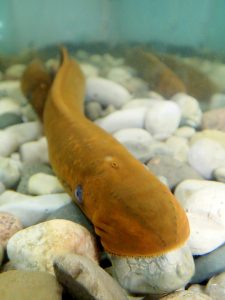Using genome editing to uncover ancestral gene functions in a basal vertebrate, the sea lamprey
David W. McCauley
Dept of Biology, University of Oklahoma, USA
Lampreys, together with hagfish, are jawless vertebrates positioned basal to other living vertebrates from which they diverged approximately 450 million years ago. The phylogenetic position of lampreys has resulted in their longstanding interest for understanding the origin and evolution of phenotypic traits characteristic of vertebrates. While lampreys have provided a wealth of knowledge for understanding how ancestral phenotypes have diverged, the lack of genomic resources and insufficient accessibility to developmental stages has limited our ability to link gene sequences with key vertebrate phenotypes. Release of the sea lamprey genome coupled with advances facilitating functional genomics have begun to enable researchers to link genotypes to a diverse set of phenotypic traits at this key node in vertebrate evolution. We have begun to adopt functional genomic tools including CRISPR/Cas gene editing, coupled with genotyping to the level of the individual embryo, to test heretofore intractable ‘cause and effect’ hypotheses linking genes with phenotypes in the lamprey by creating a versatile set of user-friendly tools that can be coupled with newly developed approaches for maintaining embryonic and larval lampreys. We have begun to address topics of widespread interest in vertebrate evolution that include the origin and evolution of neural crest developmental mechanisms, evolution of neural crest cell migration mechanisms, pharyngeal patterning, and molecular mechanisms regulating the specification and differentiation of glial cells supporting both the central and peripheral nervous systems during lamprey development. Practical aspects of our work extend to the control of invasive sea lampreys in the Laurentian Great Lakes Basin.










You must be logged in to post a comment.